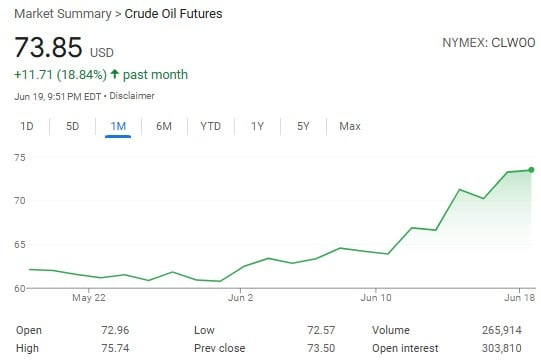The Worrying Economic Fallout of the Iran Conflict
My article for BiggerPockets on the economic ramifications of a US war with Iran

This is an excerpt from an article originally published on BiggerPockets.com
This article was written before the US strikes on Iran’s underground nuclear facilities so perhaps it’s already too late. But hopefully there’s still time to bring the US back from the brink of another foolhardy regime change war in the Middle East.
Whenever war breaks out, the most important consideration by far should always be for the people who are killed or wounded in the conflict. Economic considerations are, and should always be, secondary. However, it’s still important to understand what is likely to happen if the conflict between Israel and Iran continues, especially if the United States gets involved.
On June 13, despite another round of nuclear talks being scheduled for the upcoming weekend, Israel launched a surprise attack on the Iranian regime, taking out numerous top generals, nuclear scientists, and numerous important facilities with a combination of spies and assets it had smuggled into the country in an aerial campaign. Iran has since retaliated and been able to break through Israel’s Iron Dome on numerous occasions with its ballistic missiles. At the same time, Israel has continued to strike targets inside Iran as both sides make increasingly bellicose claims against each other.
The United States has, thus far, only provided defensive and intelligence support to Israel, but President Trump has clearly stated he is considering strikes on Iran, particularly the Fordow Fuel Enrichment Plant buried deep inside a mountain. He’s also demanded “unconditional surrender,” while Benjamin Netanyahu has hinted at the goal of regime change. However, as of this writing, the United States has not chosen to attack Iranian targets directly.
What Has the Effect Been So Far?
The biggest effect economically thus far has been a marked increase in the price of oil. Since June 13, oil prices have increased 10.4% from $66.90 per barrel to $73.85 per barrel. This is almost certainly based predominantly on fear of the future rather than actual supply shortages. So, a quick resolution to the war would likely bring prices back down.
As of now, it’s unlikely oil deliveries will be substantially affected. But that could change very dramatically if the war becomes a protracted affair, and especially if the United States gets involved. But before analyzing that possibility, we should do a quick review of recent history.
A Brief Recap of Recent American Interventions
If the success of American military interventions in the last 25 years were measured as an investment strategy, it would amount to something like putting all of your savings into FTX circa mid-2022. They go like this:
Afghanistan, 2001: The U.S. initially fought to kill Osama bin Laden and defeat Al-Qaeda. Bin Laden escaped, and it turned into a nation-building operation. Almost 2,500 Americans died, and trillions were spent in a 20-year war—just to end up replacing the Taliban with the Taliban.
Iraq, 2003: Sold on the false premise of WMD, almost 5,000 Americans and hundreds of thousands of Iraqis died as the country descended into a protracted, sectarian civil war. ISIS eventually formed out of the chaos.
…
To read the read the rest, please visit to BiggerPockets.com
You can find my other book, Awesomeness, here.
And the audiobook here.
And please subscribe to my YouTube channel.



